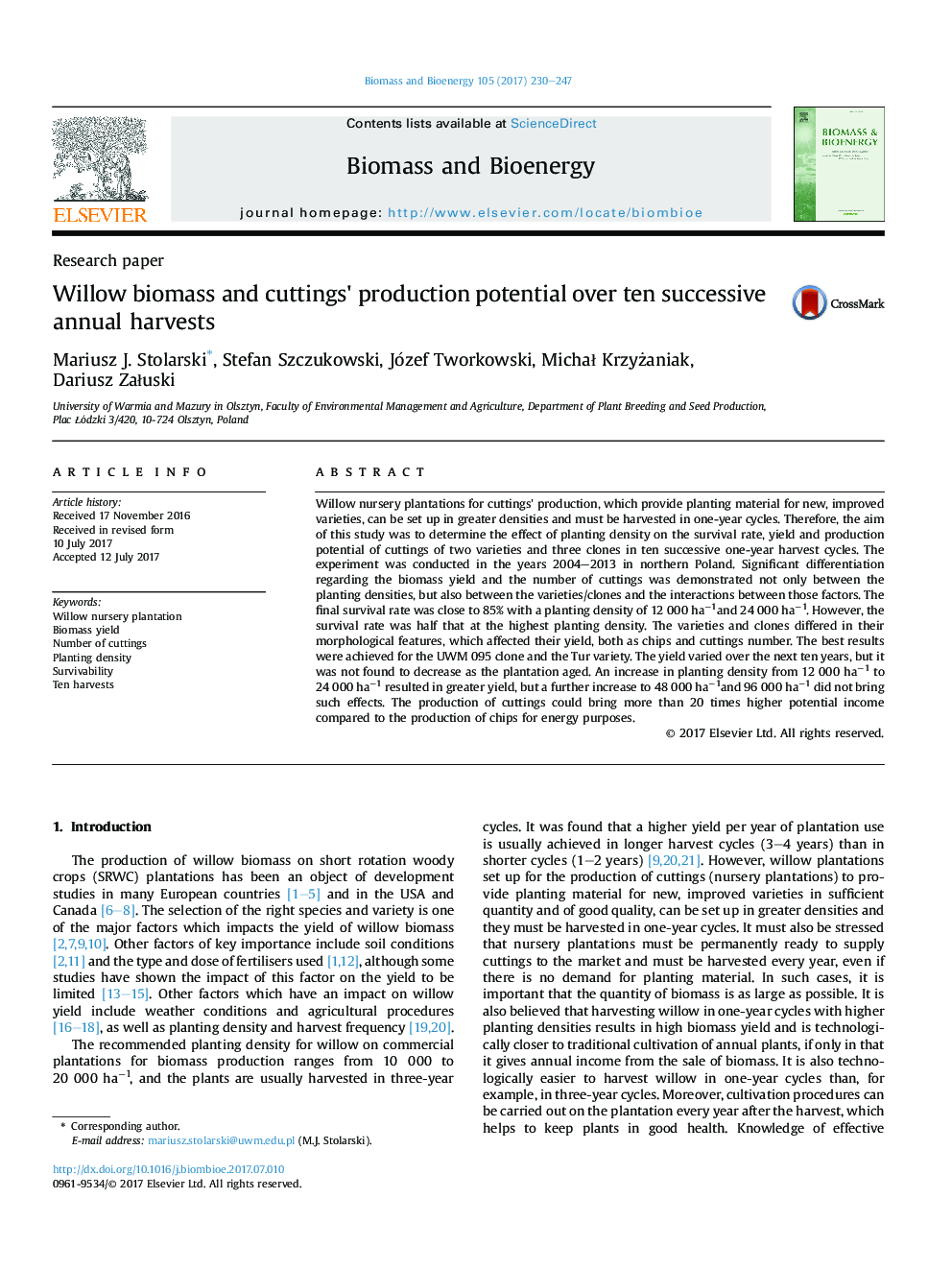| Article ID | Journal | Published Year | Pages | File Type |
|---|---|---|---|---|
| 4996162 | Biomass and Bioenergy | 2017 | 18 Pages |
Abstract
Willow nursery plantations for cuttings' production, which provide planting material for new, improved varieties, can be set up in greater densities and must be harvested in one-year cycles. Therefore, the aim of this study was to determine the effect of planting density on the survival rate, yield and production potential of cuttings of two varieties and three clones in ten successive one-year harvest cycles. The experiment was conducted in the years 2004-2013 in northern Poland. Significant differentiation regarding the biomass yield and the number of cuttings was demonstrated not only between the planting densities, but also between the varieties/clones and the interactions between those factors. The final survival rate was close to 85% with a planting density of 12Â 000Â haâ1and 24Â 000Â haâ1. However, the survival rate was half that at the highest planting density. The varieties and clones differed in their morphological features, which affected their yield, both as chips and cuttings number. The best results were achieved for the UWM 095 clone and the Tur variety. The yield varied over the next ten years, but it was not found to decrease as the plantation aged. An increase in planting density from 12Â 000Â haâ1 to 24Â 000Â haâ1 resulted in greater yield, but a further increase to 48Â 000Â haâ1and 96Â 000Â haâ1 did not bring such effects. The production of cuttings could bring more than 20 times higher potential income compared to the production of chips for energy purposes.
Related Topics
Physical Sciences and Engineering
Chemical Engineering
Process Chemistry and Technology
Authors
Mariusz J. Stolarski, Stefan Szczukowski, Józef Tworkowski, MichaÅ Krzyżaniak, Dariusz ZaÅuski,
